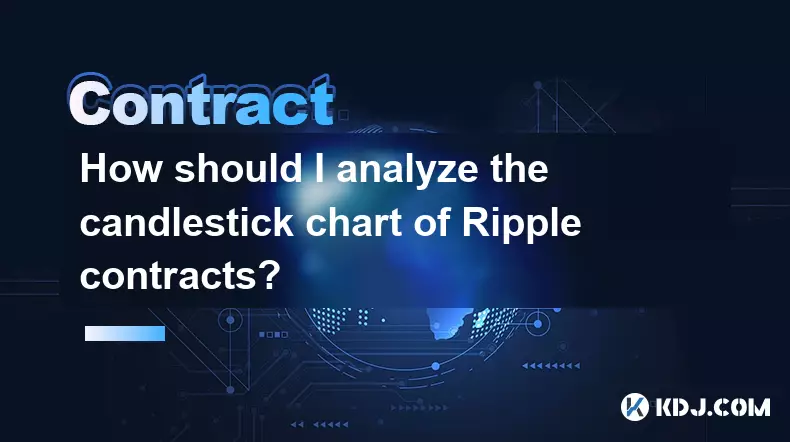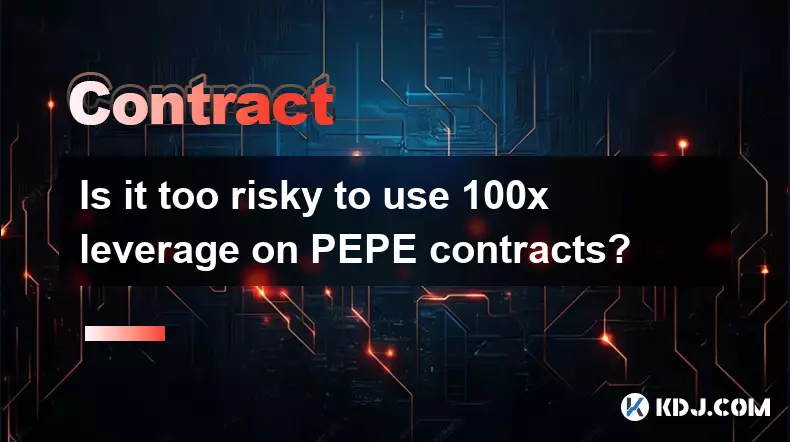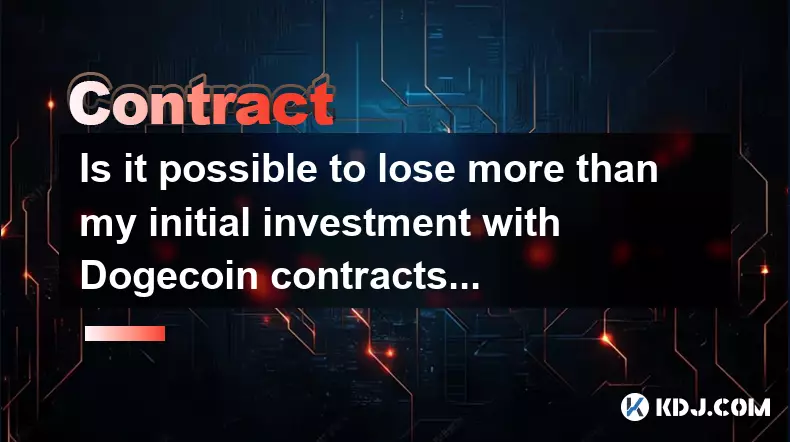-
 bitcoin
bitcoin $122659.385674 USD
0.52% -
 ethereum
ethereum $4484.113342 USD
-0.09% -
 bnb
bnb $1304.229256 USD
-0.85% -
 tether
tether $1.000204 USD
-0.03% -
 xrp
xrp $2.860636 USD
-0.51% -
 solana
solana $227.288799 USD
2.36% -
 usd-coin
usd-coin $0.999805 USD
0.01% -
 dogecoin
dogecoin $0.252837 USD
1.18% -
 tron
tron $0.341149 USD
1.12% -
 cardano
cardano $0.830507 USD
0.33% -
 hyperliquid
hyperliquid $45.792319 USD
0.04% -
 chainlink
chainlink $22.422164 USD
1.55% -
 ethena-usde
ethena-usde $1.000283 USD
0.01% -
 sui
sui $3.511389 USD
0.83% -
 stellar
stellar $0.385276 USD
-0.44%
How should I analyze the candlestick chart of Ripple contracts?
Ripple candlestick analysis works best when combining patterns with volume, moving averages, and on-chain metrics to confirm trends and avoid false breakouts.
Oct 09, 2025 at 01:36 am

Understanding the Basics of Ripple Candlestick Charts
1. Begin by identifying the time frame of the candlestick chart, whether it's 1-minute, 1-hour, or daily intervals. Each candle represents price movement within that specific period, showing open, high, low, and close (OHLC) values.
2. Observe the color of each candle—green typically indicates a bullish movement where the closing price is higher than the opening price, while red signifies bearish momentum with a lower close.
3. Pay attention to the wicks or shadows extending from the body of the candle. Long upper wicks may suggest rejection at higher prices, whereas long lower wicks can indicate strong buying pressure after a dip.
4. Look for recognizable patterns such as doji, hammer, engulfing, or shooting star formations. These patterns often signal potential reversals or continuations in price direction.
5. Combine your visual analysis with volume data displayed beneath the chart. A surge in trading volume during a breakout or breakdown increases the reliability of the signal.
Key Indicators to Pair with Candlestick Analysis
1. Use moving averages like the 50-period and 200-period to identify trend direction. When the short-term average crosses above the long-term one, it forms a bullish signal known as a golden cross.
The alignment of candlesticks near key moving averages can confirm support or resistance zones, especially when price bounces off these levels with strong-bodied candles.2. Apply the Relative Strength Index (RSI) to detect overbought or oversold conditions. An RSI above 70 may warn of an impending pullback, while below 30 could suggest accumulation.
3. Incorporate Bollinger Bands to assess volatility. When candles touch or breach the outer bands, it often precedes a reversal or consolidation phase.
4. Monitor the MACD (Moving Average Convergence Divergence) for momentum shifts. A crossover of the MACD line above the signal line supports bullish contract sentiment.
Volume and Market Sentiment in Ripple Contracts
1. High volume accompanying green candles strengthens the case for sustained upward movement in Ripple futures. Conversely, red candles with elevated volume point to aggressive selling pressure.
2. Watch for divergence between price action and on-chain metrics. If Ripple’s price rises but transaction volume declines, the rally may lack fundamental backing.
Open interest in Ripple perpetual contracts is critical—rising open interest alongside increasing prices confirms new money entering the market, reinforcing the current trend.3. Analyze funding rates on major exchanges. Positive funding suggests long dominance, which can fuel further upside if confidence remains high.
4. Sudden spikes in liquidations, particularly on the long side, can trigger sharp downward moves even after bullish candle patterns form.
Common Pitfalls in Interpreting Ripple Candlesticks
1. Avoid relying solely on candlestick patterns without confirming signals through volume or indicators. A bullish hammer pattern means little if volume is negligible.
2. Be cautious during low-liquidity periods, such as weekends or holidays, when candlestick movements may reflect thin markets rather than genuine shifts in sentiment.
3. Don’t ignore macroeconomic factors influencing crypto markets. Regulatory news about XRP or global liquidity trends can override technical setups.
False breakouts are common in Ripple contracts; always verify breakouts of key levels with follow-through candles and increased volume before taking positions.4. Overfitting historical patterns to predict future moves leads to poor decision-making. Markets evolve, and past performance does not guarantee repetition.
Frequently Asked Questions
What does a doji candle mean in Ripple futures trading?A doji appears when the opening and closing prices are nearly equal, indicating indecision between buyers and sellers. In Ripple contracts, a doji at a resistance level may suggest weakening bullish momentum and a possible reversal.
How can I tell if a candlestick pattern is reliable?Reliability increases when the pattern aligns with other technical signals—such as volume spikes, key support/resistance levels, or indicator crossovers. Isolated patterns carry less weight.
Can candlestick analysis work on leveraged Ripple contracts?Yes, but leverage amplifies both gains and risks. Candlestick patterns help identify entry and exit points, yet proper risk management is essential due to the volatility inherent in leveraged products.
Why did my bullish engulfing pattern fail in XRP futures?Even strong patterns fail when broader market forces dominate. Check for coinciding news events, exchange-specific liquidations, or divergences in on-chain activity that might have invalidated the setup.
Disclaimer:info@kdj.com
The information provided is not trading advice. kdj.com does not assume any responsibility for any investments made based on the information provided in this article. Cryptocurrencies are highly volatile and it is highly recommended that you invest with caution after thorough research!
If you believe that the content used on this website infringes your copyright, please contact us immediately (info@kdj.com) and we will delete it promptly.
- Solana, Hyperliquid, and Market Consolidation: A Whale's-Eye View
- 2025-10-09 16:25:13
- Jupiter, Ethena Labs, and JupUSD: A New Era for Solana DeFi
- 2025-10-09 17:05:12
- Wallets, MemeRush, and Binance: A Wild Ride in the Crypto World!
- 2025-10-09 16:45:15
- IPO Guide: Navigating the Initial Public Offering Like a Pro
- 2025-10-09 17:05:12
- Ethereum Price Rollercoaster: ETH Dip Before the All-Time High?
- 2025-10-09 17:25:11
- Polygon Rio: Blazing to 5000 TPS and Beyond!
- 2025-10-09 16:25:13
Related knowledge

How to calculate the ROI for Ethereum contracts?
Oct 09,2025 at 04:36pm
Understanding Ethereum Contract ROI Basics1. Return on Investment (ROI) for Ethereum contracts begins with tracking the initial capital deployed into ...

What are the settlement procedures for XRP contracts?
Oct 09,2025 at 04:01pm
Understanding XRP Futures and Derivative Contracts1. XRP derivative contracts are typically offered by cryptocurrency exchanges that support margin tr...

How to reduce trading fees for Bitcoin contracts?
Oct 09,2025 at 02:37pm
Understanding Bitcoin Contract Trading Fees1. Trading fees on Bitcoin contracts are typically charged by exchanges for executing buy and sell orders. ...

Is it too risky to use 100x leverage on PEPE contracts?
Oct 09,2025 at 04:18pm
Understanding 100x Leverage in PEPE Contracts1. Trading PEPE contracts with 100x leverage allows traders to control a much larger position using a sma...

Is it possible to lose more than my initial investment with Dogecoin contracts?
Oct 09,2025 at 02:00pm
Understanding the Risks of Dogecoin Futures Trading1. Trading Dogecoin futures contracts introduces financial exposure that extends beyond the origina...

What is the difference between futures and perpetual contracts for Bitcoin?
Oct 02,2025 at 11:54pm
Understanding Bitcoin Futures Contracts1. Bitcoin futures are derivative instruments that allow traders to speculate on the future price of Bitcoin at...

How to calculate the ROI for Ethereum contracts?
Oct 09,2025 at 04:36pm
Understanding Ethereum Contract ROI Basics1. Return on Investment (ROI) for Ethereum contracts begins with tracking the initial capital deployed into ...

What are the settlement procedures for XRP contracts?
Oct 09,2025 at 04:01pm
Understanding XRP Futures and Derivative Contracts1. XRP derivative contracts are typically offered by cryptocurrency exchanges that support margin tr...

How to reduce trading fees for Bitcoin contracts?
Oct 09,2025 at 02:37pm
Understanding Bitcoin Contract Trading Fees1. Trading fees on Bitcoin contracts are typically charged by exchanges for executing buy and sell orders. ...

Is it too risky to use 100x leverage on PEPE contracts?
Oct 09,2025 at 04:18pm
Understanding 100x Leverage in PEPE Contracts1. Trading PEPE contracts with 100x leverage allows traders to control a much larger position using a sma...

Is it possible to lose more than my initial investment with Dogecoin contracts?
Oct 09,2025 at 02:00pm
Understanding the Risks of Dogecoin Futures Trading1. Trading Dogecoin futures contracts introduces financial exposure that extends beyond the origina...

What is the difference between futures and perpetual contracts for Bitcoin?
Oct 02,2025 at 11:54pm
Understanding Bitcoin Futures Contracts1. Bitcoin futures are derivative instruments that allow traders to speculate on the future price of Bitcoin at...
See all articles










































































